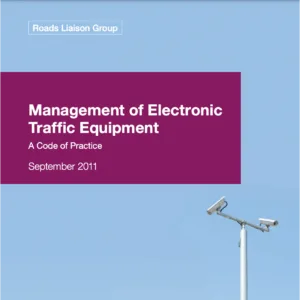Zenzic, the organisation enabling the UK’s move to Connected and Autonomous Mobility, has hailed a study from the Transport Technology Forum as providing “fundamental evidence of early progress in activity”, as it shows the UK is on track in achieving the key milestones required.
The TTF’s State of the Connected Nation report highlighted how connectivity within transport boosts productivity, increases safety and reduces real-world costs. It covers a range of initiatives including smarter parking, using new data to address road maintenance, better ways to set traffic lights to reduce emissions and congestion, and providing better information and intelligence.
These outcomes tie in with Zenzic’s UK Connected and Automated Mobility Roadmap to 2030, which is being updated this Autumn, a year after its initial launch. In one year, the Roadmap has become an indispensable tool for CAM businesses, investors and legislators worldwide.
The Transport Technology Forum has taken the results of this report and matched them with the UK Connected and Automated Mobility Roadmap to 2030update, launching 20 October. This has been done as an independent validation, as part of Zenzic’s recent CAM Creator initiative.
This matching shows:
- The UK is on track in important areas for connected vehicles such as use case definition, business cases and data requirements, making the most of existing communications, retro-fittable devices, measuring road use and operational models
- More than 1/3rd of the relevant CAM milestones are already on or ahead of track in terms of the projects in the TTF report
- The early UK pilots with local authorities have highlighted benefits and in areas such as smart parking and asset management services growing at scale
- Niche use cases and low complexity pilots have emerged in line with the Roadmap that show real benefits for both the road user and road authority, in areas such as HGV movements and reducing emissions
- Work is still needed to ensure we stay on track in communications choice, data standards for asset management, digitising road and sign assets and best practice in road operations
- Work also needs to be done to ensure the road networks can supply the data needed for connected vehicles and later autonomy, in developing skills in roads authorities, and to allow eventual replacement of the physical infrastructure such as signs with in vehicle connectivity.
The State of the Connected Nation report also highlights how relatively low-budget solutions can have significant effects.
Mark Cracknell, Head of Technology at Zenzic and architect of the UK Connected and Automated Mobility Roadmap to 2030 commented, “the work of the TTF has been vital in helping the UK get to grips with what it will take to progress towards a truly connected transport system, by putting a stake in the ground. It has been an invaluable part of our upcoming UK CAM Roadmap update, providing the backbone of key ‘Streams’ within the roadmap.”
Andy Graham of the TTF added, “We have seen good synergy with the work done by UK local authorities with DfT funding and the Zenzic roadmap’s early stages, with a particular emphasis on connectivity of existing vehicles. Where our State of the Nation Report has identified gaps, such as in skills and awareness, the Zenzic roadmap has these on board already. We will continue to update our State of the Nation Report as a verification of how the roadmap is progressing, and have also added to the roadmap how the TTF can help those stakeholders outside of roads authorities connect with them to build the business case and test new innovations”
You can read The State of the Connected Nation report here.
The UK Connected and Automated Mobility Roadmap to 2030 update will be published on 20 October 2020, providing key insights into specific development, collaborative partnerships and opportunities within the UK CAM industry.
The updated Roadmap will be available to view here.


























